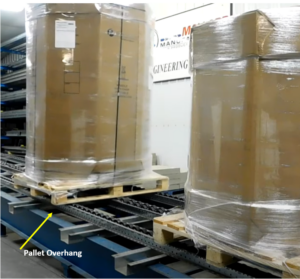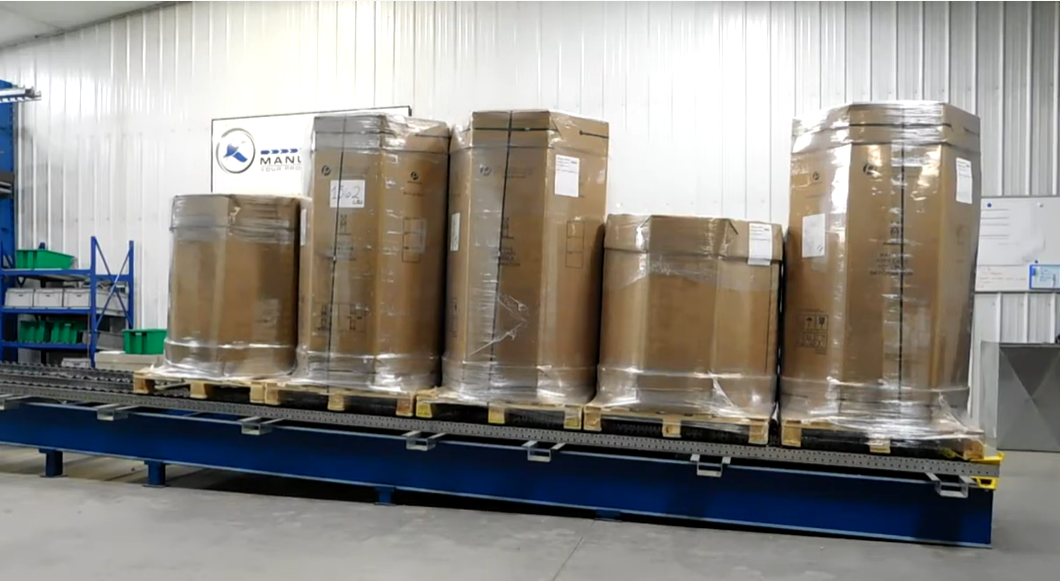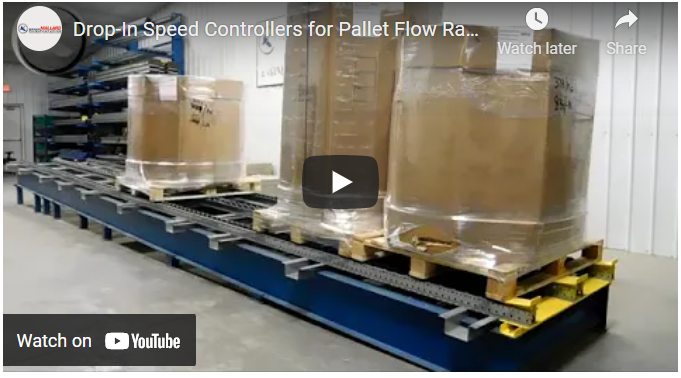Put a Lid on Runaway Pallets – Drop-In Speed Controllers for Pallet Flow Rack
SOLUTIONS
FOR THE TOUGHEST APPLICATIONS
"*" indicates required fields
Drop-In Speed Controllers Cap Off this Pallet Flow Design
Manufacturing bottle caps and lids has challenges, but one of them shouldn’t involve safe, efficient pallet flow. Flow speed and pallet tracking are critical elements to control, and we’ve got the drop-in speed controllers to handle it. Take a look at this test case – even for tall, heavy loads; there’s a safe pallet flow rack solution. This is how we approach the lane design:
Pallet Flow Lane Configuration
- 3-rail wheeled pallet flow – 2.9” diameter
- Wheel centers – 3/2/3 respectively
- Drop-in speed controllers -40# @ 56” intervals
- Pitch – 7/16” per foot on 30’ lane
- Bolt-on ramp stops
Breaking Down the Pallet Flow Lane Design
The wheeled pallet flow rails are a good choice for wooden pallets, typically speaking. The single, double (staggered), single configuration of the rails provides support and good coverage to flow the pallets. Speed controllers positioned at 56” intervals in the center rail down the length of the lane slow each pallet just enough to keep them flowing in nearly all the tests.
Bolt-on ramp stops at the end of the lane bring the pallet to a safe, complete stop and hold them in position until removed by the forklift.
Pallet Specs – Pallet 1
|
Pallet Specs – Pallet 2
|

With two pallet styles, we ran separate tests to confirm the out-to-out width for both pallets. We also tested the wider pallet on the narrow lane to verify that having too much pallet overhang is not ideal. We recommend using two separate lanes for the different pallet loads.
Test #1 – 46” out-to-out for the 48” wide pallets
Test #2 – 38” out-to-out for the 40” wide pallets
What Did We Learn from the Pallet Flow Test?
Test Results
Pallet Style #1 – The Euro pallet showed very positive results flowing the hard way (bottom boards run perpendicular to the direction of flow). If a pallet did not restart or stopped in the lane, it was easy to restart it by adding another pallet to the lane. Plugging is another option if needed.
Pallet style #2 – The picture frame pallet has a slightly different construction and has less contact with the drop-in speed controllers causing it to gain a little speed; however, the pallets remain in control down the lane.
Recommendation – Have separate lanes for the two different pallet types and loads. It is preferable to position the flow rails out-to-out to support the pallet without significant pallet overhang.
Conclusion – The tall loads were very stable during flow. These pallets are a good candidate for this system.
Mallard Test Lab Caps Off Another Pallet Flow Rack Challenge
How can the Mallard team help you today? If you would like more information about our pallet flow rack design services, want to check out our full line of pallet flow speed controllers, or think you have a pallet load challenge that the team should test, please Contact Us. Our gravity flow rack specialists are here to help you find solutions that will fit your needs and help you achieve operational efficiency. Go ahead, put the Power of Gravity to work!


